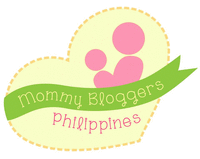>
Three-year-olds are also interested in perfecting their motor skills, and it is common for them to spend the entire morning going down the slide or learning to hop. Three-year-olds have very little memory for past events and do not understand “yesterday” and “tomorrow” the way adults do. They often repeat activities or may do and undo actions such as putting a puzzle together. These sequences are important to later understandings of change and consistency.
The developmental stages of a 3-year old:
INTELLECTUAL DEVELOPMENT
- talks so that 75 to 80 percent of his speech is understandable
- talks in complete sentences of 3-5 words. “Mommy is drinking juice. There’s a big dog.”
- stumbles over words sometimes – usually not a sign of stuttering
- enjoys repeating words and sounds
- listens attentively to short stories and books
- likes familiar stories told without any changes in words
- enjoys listening to stories and repeating simple rhymes
- able to tell simple stories from pictures or books
- enjoys singing and can carry a simple tune
- understands “now, soon, and later”
- asks who, what, where, and why questions
- stacks 5-7 blocks
- enjoys playing with clay or play dough (pounds, rolls, and squeezes it)
- can put together a 6-piece puzzle
- draws a circle and square
- recognizes common everyday sounds
- matches an object to a picture of that object
- identifies common colors such as red, blue, yellow, green
- can count 2-3 objects
- can solve problems if they are simple, concrete, real, and immediate, and if wants to
- interested in similarities and differences
- can distinguish, match, and name colors
- interested in features of animals that make them unique
- has good self-knowledge; can understand difference between self and younger children, but not between self and older children
- can say his age
PHYSICAL DEVELOPMENT
- weight: 25-44 pounds
- height: 34-43 inches
- develops a taller, thinner, adult-like appearance
- develops a full set of baby teeth
- needs approximately 1,300 calories daily
- sleeps 10-12 hours at night
- sleeps through most nights without wetting the bed (occasional
accidents are still quite common) - uses the toilet with some help (many boys may not be ready for toilet learning until sometime during their third year)
- puts on shoes (but cannot tie laces)
- dresses self with some help (buttons, snaps, zippers)
- feeds self (with some spilling)
- tries to catch a large ball
- throws a ball overhead
- kicks a ball forward
- hops on one foot
- walks short distance on tiptoes
- climbs up and down a small slide by self
- pedals a tricycle
- walks on a line
- can stand, balance, and hop on one foot
- jumps over a 6″ barrier
- can feed self with spoon and small fork; often butters bread with
knife - can use toilet independently
- can brush teeth, wash hands, get a drink
- interested in handling food and cooking procedures
SOCIAL AND EMOTIONAL DEVELOPMENT
- seeks attention and approval of adults
- sometimes shows preference for one parent (often the parent of the opposite sex)
- accepts suggestions and follows simple directions
- enjoys helping with simple household tasks
- can make simple choices between two things
- enjoys making others laugh and being silly
- enjoys playing alone but near other children
- spends a great deal of time watching and observing
- enjoys playing with other children briefly, but still does not
cooperate or share well - enjoys hearing stories about self
- enjoys playing “house” enjoys imitating other children and adults
- answers whether he is a boy or a girl
- expresses interest in ethnic identities of self and others if exposed to a multicultural setting
Reprinted with permission from National Network for Child Care – NNCC. Oesterreich, L. (1995). Ages & stages – three-year-olds. In L. Oesterreich, B. Holt, & S. Karas,Iowa family child care handbook [Pm 1541] (pp. 202-204). Ames, IA: Iowa State University Extension.
You might also want to read: Ideas for caregivers of 3-year olds
And What a 3-year old should know? 




